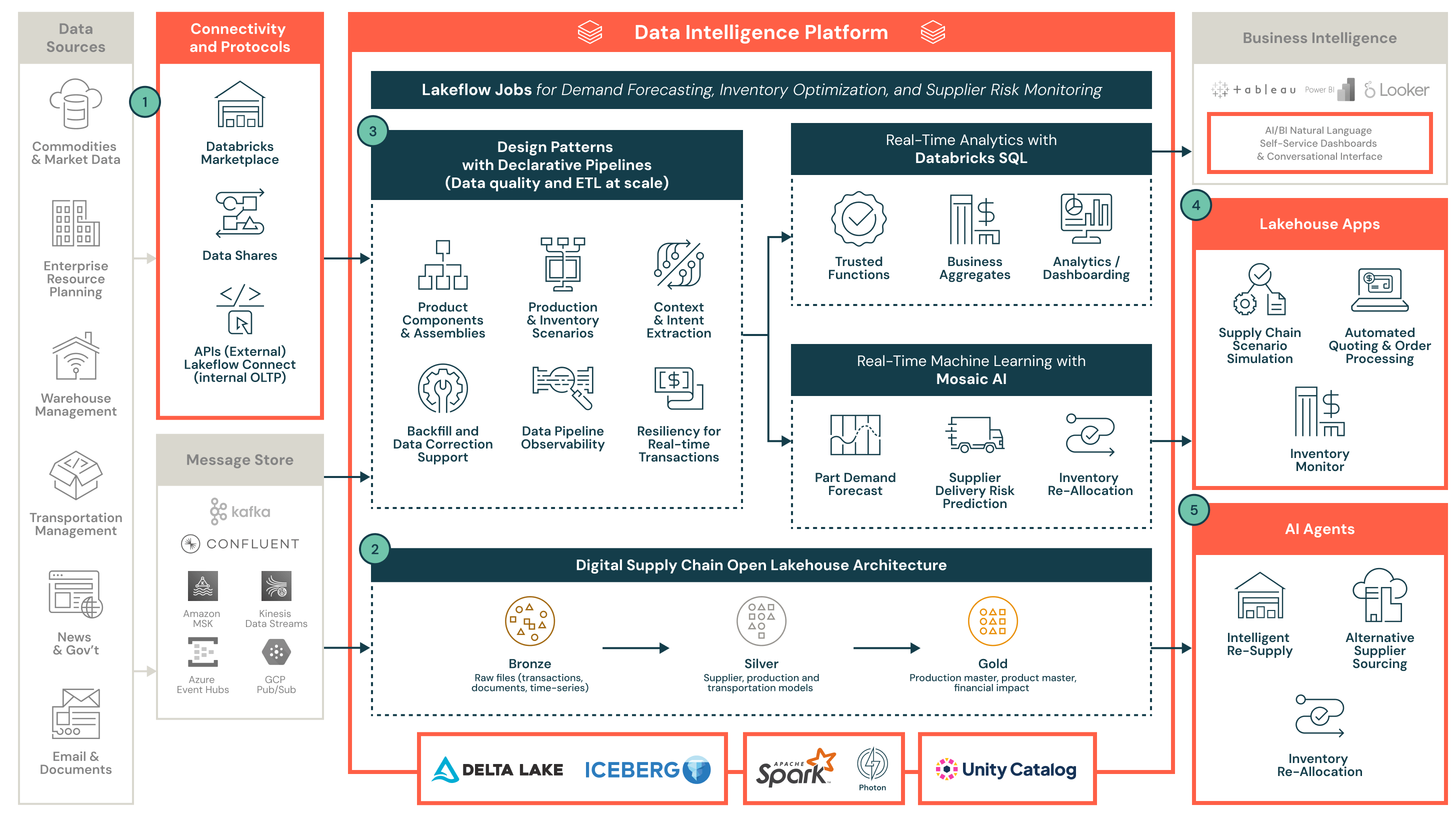Manufacturing Digital Supply Chain Reference Architecture
This architecture helps you understand integrations with common industry sources and sinks for digital supply chain use cases for Manufacturing. It outlines the best practice design patterns across the lakehouse architecture.

Establish your digital supply chain foundation for real-time visibility, natural language scenario planning, and autonomous AI agents.
Data and platform flows:
- ERP, WMS, TMS, news, email, and market data collected from on-premises/hybrid data systems using Lakehouse Federation or Lakeflow Connect.
- Partners
- Databricks Marketplace Data Providers
- Data is ingested via Lakeflow Connect into the medallion architecture bronze layer alongside metadata, leveraging efficient incremental reads and writes to make data ingestion faster, scalable, and more cost-efficient, while your data remains fresh for downstream consumption.
- Clean and enrich heterogeneous data scalably using Lakeflow Declarative Pipelines for both batch and streaming data pipelines into Silver tables (sales, supply, production, transportation). Silver tables are often used as training inputs to AI models for predicting part-level demand, supplier delivery risk, and inventory optimization, thereby accelerating supply chain planning cycles across millions of SKUs.
- For business intelligence and reporting, data can be aggregated within Gold tables to support real-time analysis of supply chain performance, including compliance, supplier risk exposure, and current inventory positions. Additionally, natural language interfaces like AI/BI democratize access to supply chain analytics across your organization.
- The Mosaic AI Agent Framework can train, serve, and audit agentic AI models, such as multimodal parts forecasting and autonomous supply chain countermeasures like purchase order revision.
Benefits
Databricks empowers organizations to revolutionize their supply chains through a unified data intelligence platform. By combining multimodal ML capabilities with Mosaic AI, seamless data collaboration with Delta Sharing, and unified governance with Unity Catalog, Databricks eliminates silos and enables real-time, AI-driven decision-making. Databricks makes supply chain data accessible through natural language querying with AI/BI and advanced Generative AI Agent tools and apps to empower all supply chain user personas. This holistic approach not only enhances operational efficiency and reduces costs but also fosters innovation across the entire supply chain ecosystem. Databricks is the catalyst for transforming traditional supply chains into agile, intelligent networks that drive competitive advantage in today's dynamic business landscape.

